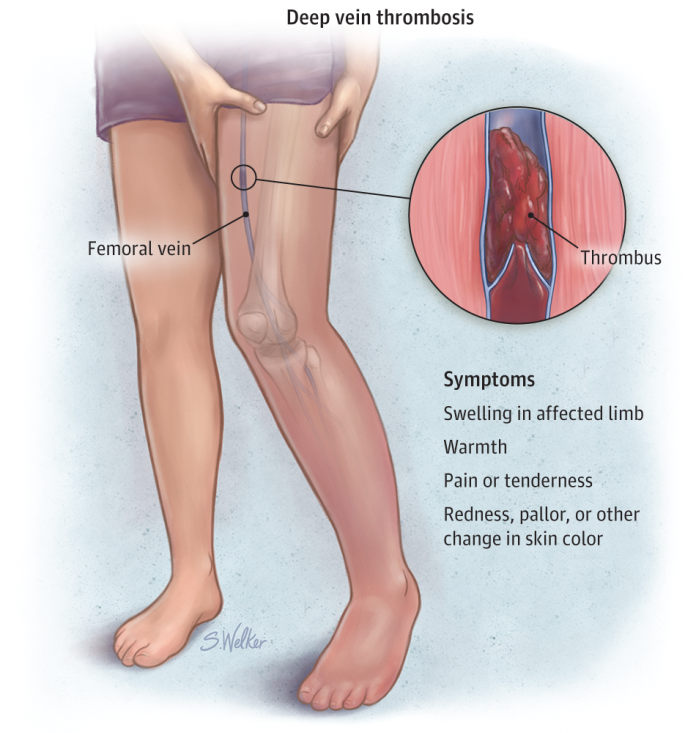Deep venous thrombosis
Blood vessels are the arteries, veins and capillaries. They are responsible for transfusion of blood to all cells, tissues and organs of the body, and blood flows naturally. Unless the body or thigh is specifically infected with blood thrombosis or blood clotting, which converts blood from the liquid to the semi-frozen, it results to stop the flow of blood in the veins of the blood deep under the skin, which in turn affect the veins of the thigh, and cut off the blood from reaching to the leg, which shows symptoms of the thrombosis, and may extend blood clotting to the lungs and heart and kidneys and it may reach the brain and this is the most serious cases resulting from thrombosis, and in this article we will mention symptoms of a clot thigh.
Symptoms of thrombosis
Symptoms of the thrombosis may occur late, which causes difficulty or delay in treatment, and rarely show symptoms early in the infection, and some of the symptoms including:
- Hip pain occurs in the form of cramps, especially during movement or during pressure on the affected area.
- Feeling numb in the leg and thigh.
- Changing the color of the affected area to blue.
- High temperature on the affected area.
- Feeling cold in most parts of the body.
- The appearance of swelling in the form of congestion in the superficial veins under the skin.
Causes of thrombosis
The main cause behind the thrombosis is the slow flow of blood in the blood veins. There are secondary causes of the thrombosis, including:
- Genetics.
- Smoking.
- Overweight.
- Aging.
- Taking some pills such as pregnancy pills for women.
- Inactivity due to some diseases that prevent movement.
- The nature of work that makes a person sit for a long time, like drivers.
- Some diseases, such as heart disease.
Treatment of thigh thrombosis
People with a thrombosis should take full care and receive appropriate treatment under the supervision of a specialist.
- Use rubber compression socks, which help relieve pain during movement.
- Use hot water compresses the place of injury.
- Trying to remove the strokes by a specialist.
- Take blood-thinner medications under doctor’s supervision.
- To use anticoagulants under the supervision of a specialist doctor
Prevention of thrombosis
It is recommended to follow some instructions that contribute to relieve stroke pain, or reduce the risk that may affect people, and these things include:
- Quitting smoking.
- Lifting the legs higher than the body level.
- Changing the seating position and movement from time to time.
- Walking and practicing some simple exercise supervised by a specialist.
- Following a healthy diet free from fatty substances, and relieving the excess weight.



